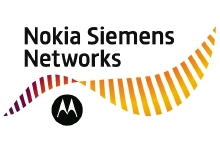Will pay $1.2 billion for everything except iDen
Nokia Siemens Networks (NSN) has announced that is is acquiring almost all of Motorola’s wireless networks business.
NSN made a concerted effort last year to buy Nortel’s CDMA assets – to give it an increased CDMA presence and also boost its presence in American markets. It was outbid on that occasion by Ericsson, and has now gone back to the market to take over Motorola’s network assets.
The companies say that NSN will pay $1.2 billion in cash for Motorola’s GSM, CDMA, WCDMA, WiMAX and LTE assets. It will not take the iDen technology as part of the deal. NSN says that the acquisition will give it relationships with 50 incumbent operators, as well as “strengthening its relationship” with China Mobile, Clearwire, KDDI, Sprint, Verizon Wireless and Vodafone. The deal should close before the end of the year, a joint statement said.
Nokia Siemens Networks expects that based on revenue, with the addition of the Motorola wireless network infrastructure business, it will become the #3 wireless infrastructure vendor in the United States, the #1 foreign wireless vendor in Japan (ie after NEC), and strengthen its current #2 position in the global infrastructure segment.
Approximately 7,500 employees are expected to transfer to Nokia Siemens Networks from Motorola’s wireless network infrastructure business when the transaction closes, including large research and development sites in the United States, China and India.
“As customers look to transition from CDMA networks to next generation technologies, the addition of the Motorola wireless network infrastructure business is targeted to ensure that we are well placed to meet those needs,” said Bosco Novak, head of Customer Operations at Nokia Siemens Networks. “Together, we will utilize the combined strength of Nokia Siemens Networks’ TD-LTE solutions and Motorola’s WiMAX and LTE businesses, to better meet customers’ evolving technology and business needs.”
Motorola claims 41 WiMax contracts in 21 countries; has 30 active CMDA networks in 22 countries; and a “robust” GSM installed base, with more than 80 active networks in 66 countries. It also claims “excellent traction” with LTE early adopters.
This last point is perhaps strategically most important to NSN. The vendor needs to claim market share as operators move to LTE and TD-LTE – and with CDMA (and some WiMax) operators showing signs of doing so – it makes sense for NSN to have a foothold in current CDMA operators, as well as the ability to lean on Motorola’s strong WiMax experience.
The deal would bring to an end a long history for Motorola in wireless networking. Although the company was at the vanguard of GSM rollouts, as evidenced by those 80 networks, it largely failed to make a similar impression in 3G and HSPA. With the handset side of the business also struggling, a split in the company was often mooted as making most financial sense. Now that split has turned in to an asset sale and transfer of personnel.
There was no further detail on how the product sets of the two companies would be resolved into one portfolio, but that will be a key point to watch as the deal progresses.
When Nokia Networks merged with Siemens Networks, it took the company longer than it expected to create a coherent corporate culture. In that instance the merger wasn’t helped by some nasty allegations hanging over Siemens. This time the merger will see more geographical and market synergy, with Motorola strong in enterprise and government sectors, as well as the USA and Americas.
With that in mind, the companies also announced they will explore a global relationship in the public safety arena. This relationship would combine Motorola’s public safety relationships with Nokia Siemens Networks’ commercial LTE solutions.


